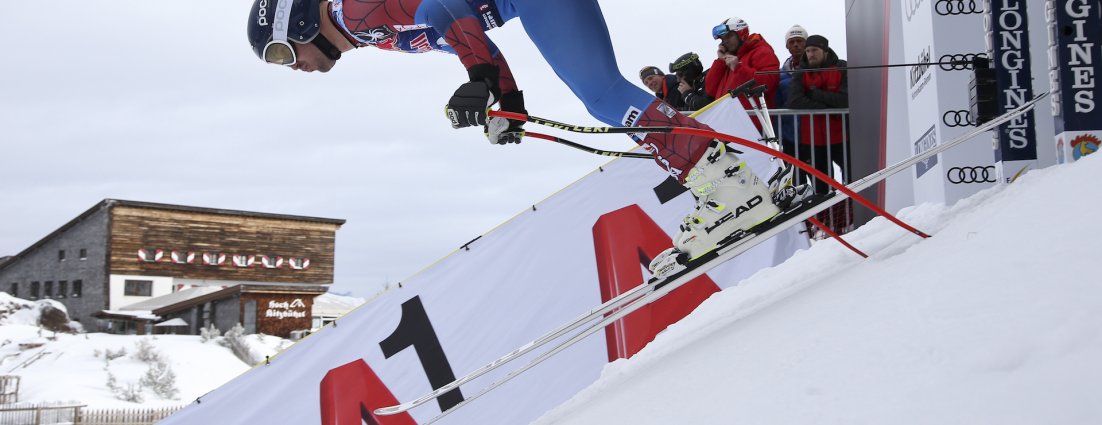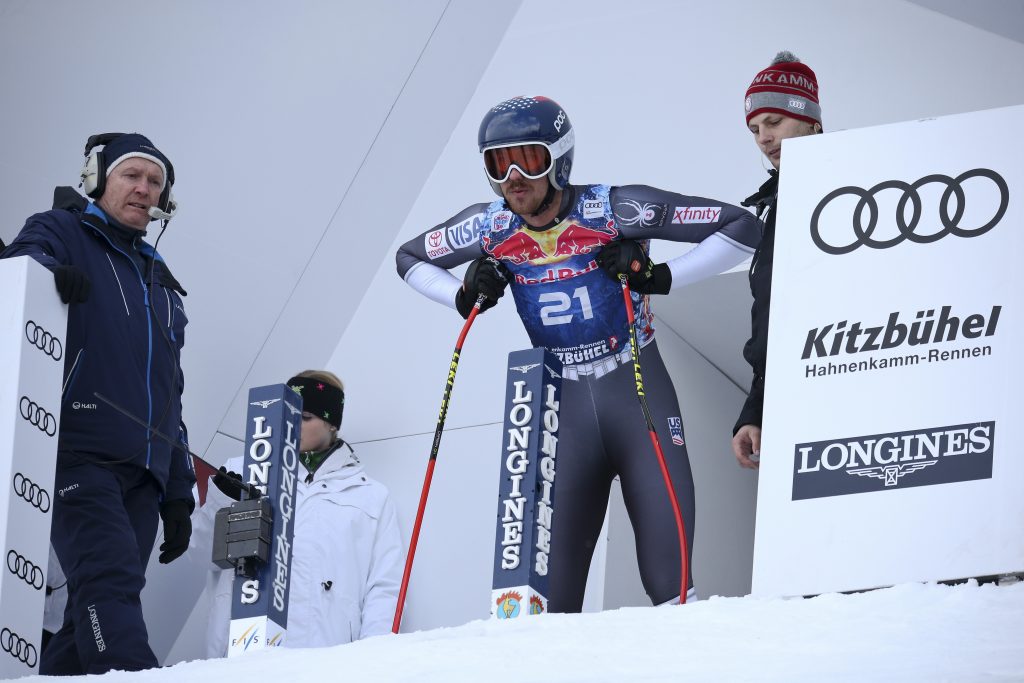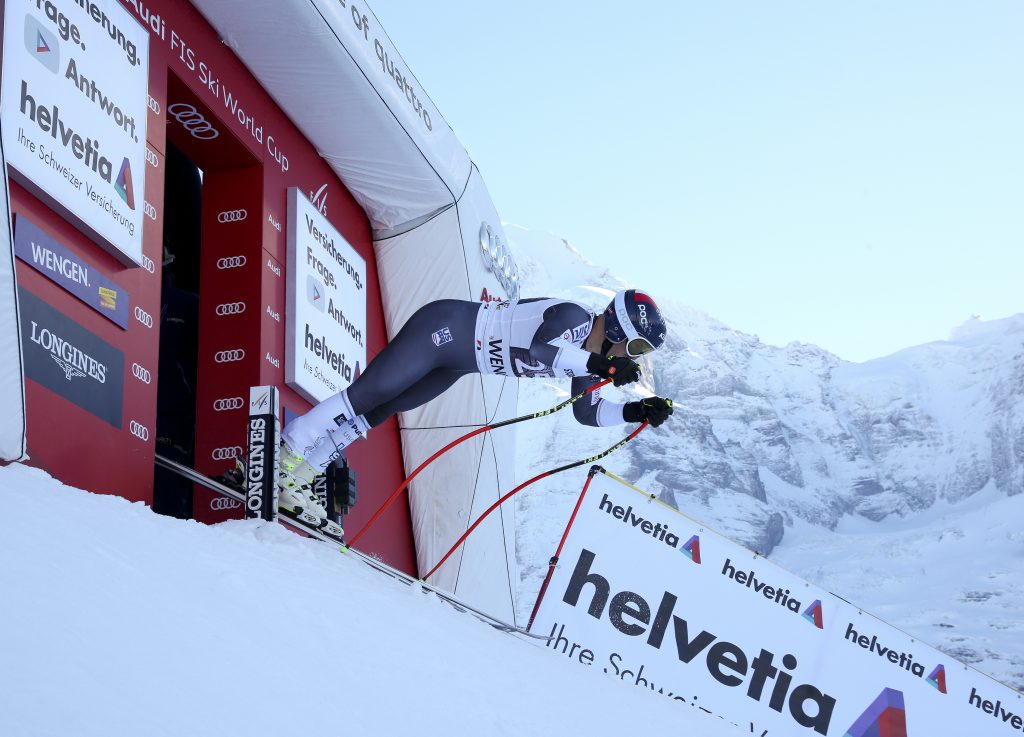How To Be Fast Out Of The Start
01.08.2019 | Sean Higgins

Take a minute and think about all of the different things you focus on during a race day. Are your skis tuned and waxed? Check. Did you eat a good breakfast? Check. Have you paid attention to all the tricky sections of the course during inspection? Check, check, check. Here’s one thing you, and many racers like you, may have missed: Did you pay attention to how you would push out of the starting gate and get up to speed in the first few seconds of your run?
American downhill ski racers Bryce Bennett and Jared Goldberg practiced just that during their annual prep-period training camp in Chile to break down just what it takes to have a World Cup caliber start. As you’ll find out, a quick and well thought out start is just one more piece to the puzzle for the fastest skiers in the world.
Free time
Little things about your routine or setup that give you a slight advantage over your competitors are what the American Downhillers like to call “free time.” Things like a good night’s sleep before race day, a fresh speed suit free of holes, and properly functioning equipment like pole straps and boot buckles can all be considered free time.
Your start, although requiring a bit of effort on your part, can also be considered free time if you are strategic and think about a few key aspects that other racers might overlook.
“It can be free time,” Bennett says. “It’s technically not as demanding of a process to excel at compared to arcing turns for speed. If you can put a little practice into it, you’ll be surprised at the tenths you can gain.”
“Look at which way the gate opens and stay closer to the end of the wand when you push out,” adds Goldberg. The further you are from the base of the start wand, the further you can move down the mountain before starting the timing system.

Most people would be surprised to know just how much thought goes into a fast start on the World Cup. Bryce Bennett in the start at Kitzbuehel. Image Credit: GEPA Pictures/Wolfgang Grebien
Feet first? Not so fast…
There are numerous ways to actually leave the starting gate. Some people, like the legendary Austrian Hermann Maier, was famous for his ultra-explosive starts that sent him rocketing down the mountain. Others, like American Bode Miller, preferred a more subdued approach to the starting gate and chose to rely on his skating and pushing power to propel him to victory.
Whichever method you choose, there is one golden rule of a ski racing start: your feet should be the last part of your body to leave the starting gate.
When it comes to actually getting up to speed once you leave the gate, both Bennett and Goldberg agree that your arms supply a lot of the power for the first few pushes before your legs take over.
“Legs become your afterburners, especially when you get a little speed going,” says Goldberg.
“You need both, but the legs provided a majority of the power, so use them,” adds Bennett.
Goldberg adds that it is important to understand that no two venues are the same and you will have to alter your approach to the start for each.
“It totally depends,” he says. “At Kitzbuehel, I hardly push at all; at Copper Mountain for early season training, probably six pushes and four skates or more.”
Practice makes perfect
How many times have you actually practiced your starts? Odds are, not many. It turns out that both Bennett and Goldberg had limited practice time out of the start before making the U.S. Ski Team.
“I didn’t [practice] but I wish I had, in fact I never really thought about it,” admits Goldberg. “Before, I just pushed and skated hard but never focused on technique.”
Bennett says he and his teammates on the Squaw Valley Ski Team would occasionally have friendly competitions out of the start, but the focus was more on beating your buddies and less about being strategic with your technique and ways to squeeze a tenth or two out of the first few seconds of your run.
Now, the American Downhillers have focused practice out of the start several times throughout the year. At the U.S. Ski Team’s speed center at Copper Mountain, Colo. each fall, a start ramp is built and timing is set up 100 or so feet down the hill where athletes can quickly lap around and get start reps in. A combination of timing and video analysis is used to figure out the best start technique for each individual athlete. What is fastest for Bennett might not be the best option for Goldberg.
“Generally, we will take 10-30 starts, reviewing our video every couple starts,” explains Bennett. “We also talk a lot of smack; it turns very competitive, quickly.”
Training your start does not have to be on skis, either. There are several ways to target specific muscles and hone your skating coordination during off-season workouts. Using a cross-country skiing machine or regular pull-down cable machine in the gym is a great way to hone your upper body strength. Another method, and a favorite of the American Downhillers, is to use hockey or inline skates to enhance their coordination and explosiveness. The ankle and leg movements of skating are virtually the same on skates or skis.

No matter what, your feet should be the last part of your body to leave the starting gate like Jared Goldberg’s are in Wengen. Image Credit: GEPA Pictures/Wolfgang Grebien
Tricks of the trade
Bennett and Goldberg have picked up a few tricks of their own over their years on the World Cup. Watching other athletes that are famously fast out of the start like Norway’s Aleksander Aamodt Kilde can give you some ideas for your own starts. We won’t name any names, but Bennett and Goldberg both say there are even a couple of well-known World Cup athletes that are notoriously slow out of the start and instead rely on impeccable skiing technique to make that time up later on in the course. For both you and the American Downhillers, it all comes down to experimentation.
“When you place your poles over the wand, make sure your poles are firmly planted, nothing destroys a fast start like a pole slip. No one wants to see a pole slip, either,” Bennett recommends. “The first three poles and skates are very important, think quick, quick, quick. Gaining as much velocity in the shortest amount of time is the key.”
With a little time and some focused practice, you might be surprised at how much difference a well thought out and explosive start can help you climb the results sheet this winter.